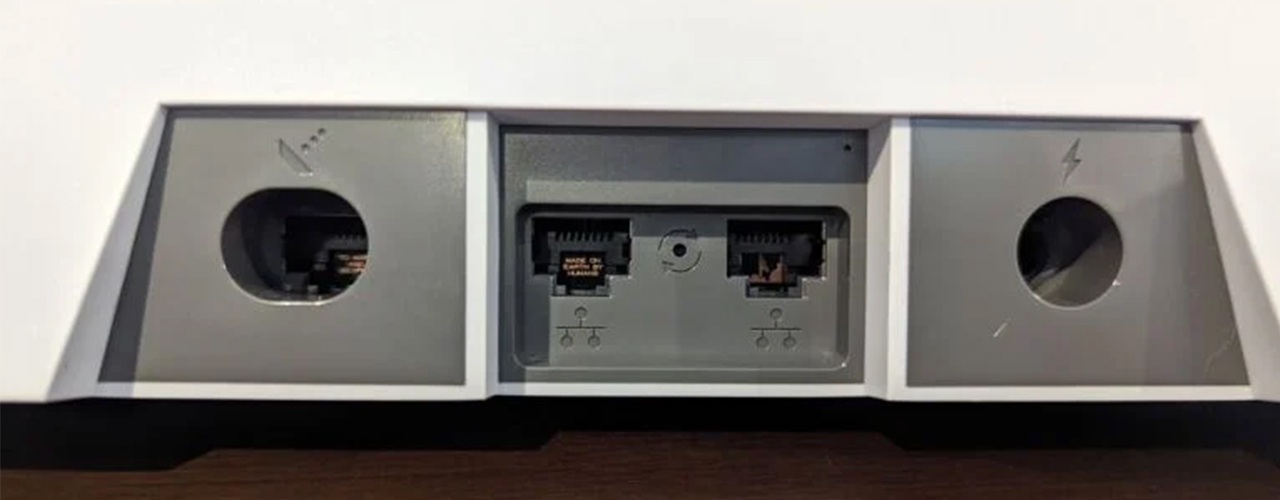Mars – themed secrets are tucked away in Starlink’s hardware, the app, and even the terms of service of SpaceX’s satellite internet service. What do they all signify?

You may know Elon Musk for his acquisition of Twitter, his Tesla brand of electric vehicles, or his leadership of SpaceX and Starlink internet. This outspoken billionaire is engaged in numerous ambitious businesses and projects on Earth. However, his most audacious aspiration lies a bit further afield: Musk aims to colonize Mars.
Indeed, the wealthiest man on our planet intends to send humans to inhabit our nearest neighbor in the solar system. This is a goal he has been vocal about for years, and it has influenced the establishment of several of his companies, from SpaceX to The Boring Company. It’s not merely a long – term objective or just the concept behind his “Occupy Mars” T – shirts.
As a reviewer (and customer) of Starlink for several years, I’ve chanced upon numerous indications of this interplanetary ambition throughout the equipment and software of Starlink. From the hardware to the app, and even within the terms of service, Starlink is replete with mysterious clues and subtle allusions to Musk’s fascination with Mars. Here’s what I’ve unearthed so far.
Circuit – Board Slogans
When the first Starlink dish was distributed to beta testers in 2020, some extremely inquisitive users decided to crack it open and explore its interior. These dish dissections offer an unconventional view of the inner workings of the Starlink dish, which were evidently not designed to be seen by the majority of users. But that doesn’t imply there was nothing of interest to discover.
Cybersecurity researcher Lennert Wouters pried open a V1 Starlink dish to access the security firmware of the terminal and posted images online, revealing a hidden message.

Printed on the circuit board that forms the antenna array of the Starlink dish is the statement “Made on Earth by humans.” It’s a curious phrase, no doubt, but not entirely unexpected from someone planning to expand human presence beyond our home planet. In fact, the same slogan has been detected in Tesla vehicles, including the Tesla Roadster that Musk launched into space.
Red – Planet Jacks
Begin examining some of the newer Starlink hardware, such as the latest Gen 3 Wi – Fi 6 router, and you’ll notice the phrase reappearing. If you peek inside the Ethernet ports on the back of the Wi – Fi 6 router, you’ll see bits of intriguing text (and more) at the rear of the port sockets. Look closely (you really need to, as it’s very tiny), and you can make out the words “Made on Earth by humans” inside one of them.

That’s not the only slogan Musk has concealed in the most recent Starlink equipment. Check out a second Ethernet port on the router, and you’ll find the words “To Mars and beyond.”

Examine the third socket, and instead of text, you’ll find a very small, stylized image of a SpaceX rocket launch.
That’s three more hidden messages in just one device. But it turns out that Starlink’s hidden messages aren’t always so covert…
A Cryptic Circular Logo
Officially, the Starlink logo is simply the name “Starlink,” presented in a very understated sans – serif font. It’s sometimes paired with the stylized X from the SpaceX logo, but often it’s just the wordmark – the stylized text by itself. That’s what you’ll see on the Starlink box when you receive your standard installation kit, what’s used in install guides and user manuals, and what appears on the Starlink website.

However, if you use the Starlink app, or take a look at the front of the Starlink router, starting from the Gen 2 router in 2021, you’ll discover Starlink’s other logo: a mysterious trio of circles. It’s an interesting glyph, but at first glance, it may not seem to hold much significance.
But that doesn’t mean it’s meaningless. In fact, the logo is a stylized representation of the Hohmann transfer orbit, which charts the flight paths between Earth and Mars. Add a bit of flair to the diagram and relax the mathematical precision, and you get a pretty cool logo that can be emblazoned on routers, app icons, or T – shirts.
Named after German engineer Walter Hohmann, this astronautic maneuver minimizes the fuel consumption for traveling between orbiting planets by leveraging the momentum of the Sun’s gravity, creating an arcing path from Earth to Mars. On the return journey, the path arcs in the opposite direction, completing the loop back to Earth. (NASA has a pretty cool explanation if you want to delve into the astrodynamics of it all.)
Oh, and that big X in the SpaceX logo? The extended, curved stroke is based on the arcing launch path that the company’s rockets follow when blasting off into space.
Get Your App to Mars!

Last April, Starlink users might have noticed a Martian surprise in the Starlink app.
On the app’s home screen, you can monitor the status of your dish and router, thanks to a small graphic of the Starlink equipment that shows active connections and whether the dish is communicating with the satellites above. Normally, this is presented on a plain gray background, and if you tap and drag your finger across the screen, you can view the dish from different angles. (It’s a 3D rendering rather than a flat image.)

But on April 1st, as an April Fool’s joke, the Starlink app underwent a slight change. The sterile gray background was replaced with a textured map of the Martian surface, complete with red soil. This Mars – landscape background vanished within a day or two. But, just like the “Made on Earth by humans” slogan, it has resurfaced.
By navigating to your Starlink settings – in the advanced settings hidden away from the regular app menus – you’ll find a small toggle labeled “Teleport Starlink to Mars.” Turn it on, and your Starlink dish is back on the red planet. You can turn it on and off whenever you like, allowing you to send your dish to Mars at will.
Now Read This: Starlink’s Martian Clause
The hidden messages on circuit boards, in plug sockets, logos, and apps are just waiting to be found, but I discovered the last hidden Mars reference in a place where no one would ever think to look: the terms of service for Starlink customers. (Does anyone actually read the terms of service?)

Buried in the middle of 11 pages of legal jargon is a section titled “Governing Law.” It starts off quite plainly, explaining that customers on Earth (or the Moon) will be governed by the laws of the State of California, where Starlink was headquartered before its recent (and sudden) relocation to Texas. That’s not uncommon; satellite phone provider Iridium, for example, states in its own terms of use that customers will be “governed by the laws of the Commonwealth of Virginia,” where Iridium is headquartered. (Sure, Iridium doesn’t mention the Moon, so that’s a bit odd.) But Starlink’s terms are mostly normal… until you read further.

Things take a Martian turn as the document addresses “Services provided on Mars” or during transit to or from the red planet. Now, it asks customers to “recognize Mars as a free planet” where no Earth – bound government has jurisdiction. Then, it states that all disputes will be resolved according to the “self – governing principles” of any Martian settlement. What?
Some have expressed concern that this mention of Martian independence in a document filled with legal mumbo – jumbo makes millions of customers – including several governments – unwittingly sign on as supporters of some esoteric interplanetary politics. While I wouldn’t put it past Musk to cite the number of signed customers in this context as a strategic move down the line, for now, it’s just a clever Easter egg hidden in the midst of otherwise dull legalese. After all, all Starlink customers are currently on Earth, and with no human colony on Mars, SpaceX has no need or authority to establish the planet as an independent entity.
But that doesn’t mean it couldn’t happen! In fact, SpaceX has a contract with NASA to explore using Starlink technology to provide global networking on Mars and to facilitate communication between Mars and Earth. It’s all hypothetical and currently far from the testing stage. However, Musk has overseen several profitable ventures that started as similar far – fetched ideas, so don’t dismiss this one entirely.
Starlink Easter Eggs: What Do They All Mean?!
I’ve joked about these hidden messages being “clues,” but there’s no real mystery here. Elon Musk wants to reach Mars, and he’s building a successful business empire to make it happen. If you’ve been following Musk in the news – and, to be honest, it’s hard to avoid – then these Martian aspirations are no surprise. They’re right there on the SpaceX website, after all.


